Abstract
To explore the effect of physiologic hypertrophy superimposed on pathologic hypertrophy, hearts from female control rats (C), renal hypertensive rats (H), rats conditioned with a 10-12 wk swimming program (Sw), and hypertensive rats trained by the swimming program (H-Sw) were perfused in an isolated working rat-heart apparatus. Systolic blood pressure was approximately 100 mmHg in C and Sw and was 160 mmHg in H and H-Sw. The swimming program had no effect on blood pressure. Compared with C, heart weight was increased by 30% in Sw, 47% in H, and 77% in H-Sw. At high preload and afterload, cardiac output (milliliters per gram dry LV weight) was decreased in H, increased in Sw, and partially restored towards normal in H-Sw. Ejection fraction, percent fractional shortening, and mean velocity of circumferential fiber shortening were enhanced in Sw, depressed in H, and normalized in H-Sw when compared with C. Coronary flow and myocardial oxygen consumption in this series of hearts were depressed in H, with no restoration in H-Sw, but coronary effluent lactate/pyruvate ratios were only elevated in the hearts of H-Sw. Coronary vascular responses were examined in a second series of experiments which used microspheres. In this series, the depressed coronary flow observed in H was partially restored towards normal in H-Sw and the inner/outer myocardial flow ratio was normal when hearts were perfused at 140 cm aortic pressure but was somewhat depressed in both H and H-Sw when the hearts were perfused at 80 cm aortic pressure. These studies demonstrate that hypertrophic hearts from renal hypertensive rats have diminished coronary flow and depressed cardiac function when they are studied in the isolated working heart apparatus, yet there is no evidence of myocardial ischemia. Superimposition of a chronic swimming program results in increased hypertrophy but restoration of cardiac function partially or completely to normal. Thus, pathologic and physiologic hypertrophy are biologically distinct entities. Physiologic hypertrophy may partially ameliorate the defects associated with pathologic hypertrophy.
Full text
PDF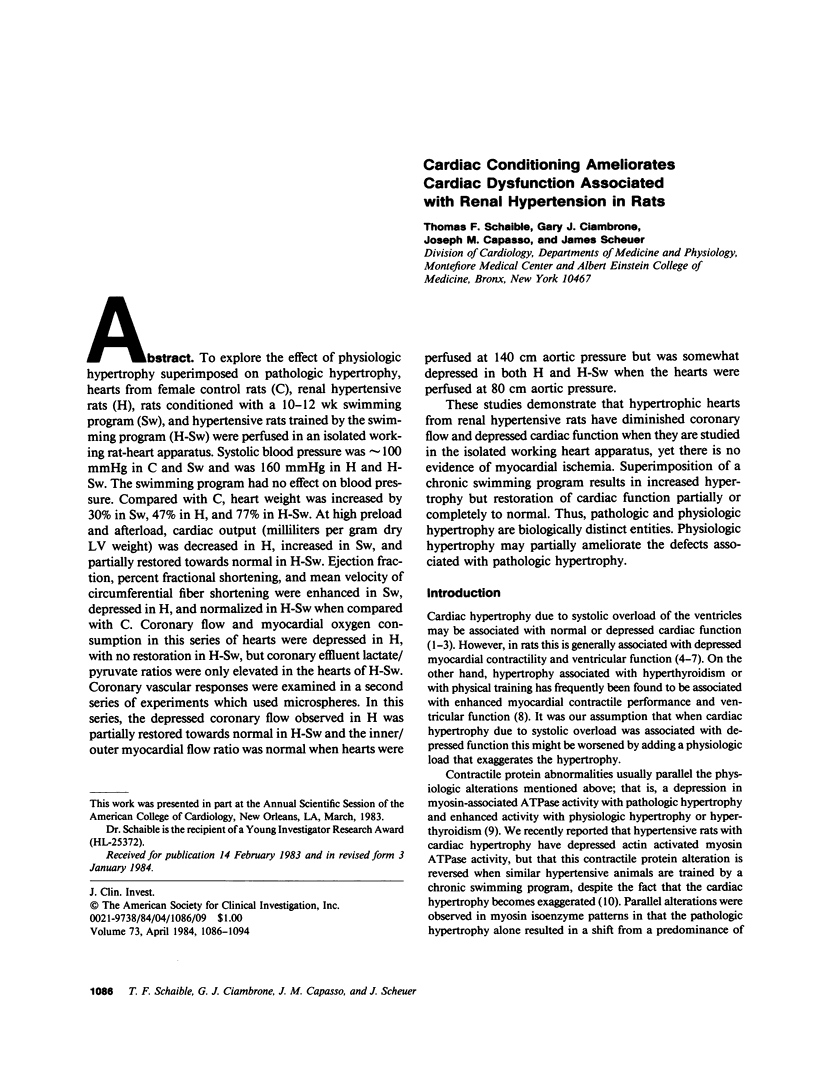
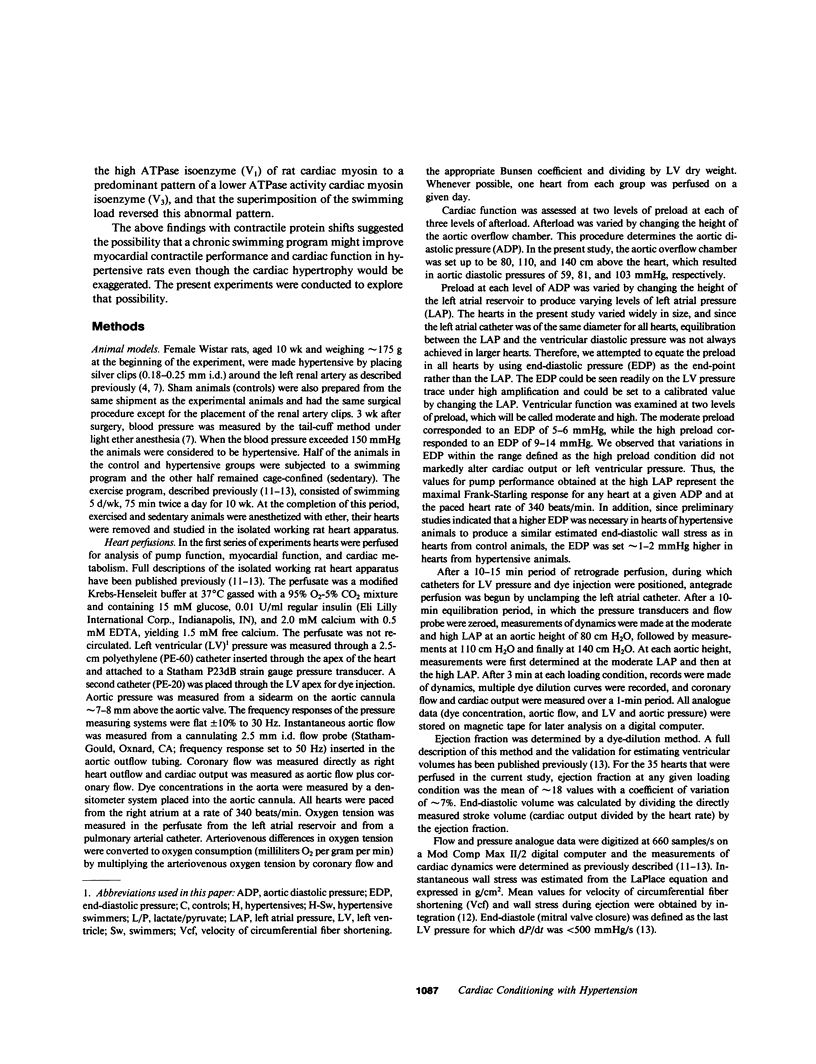
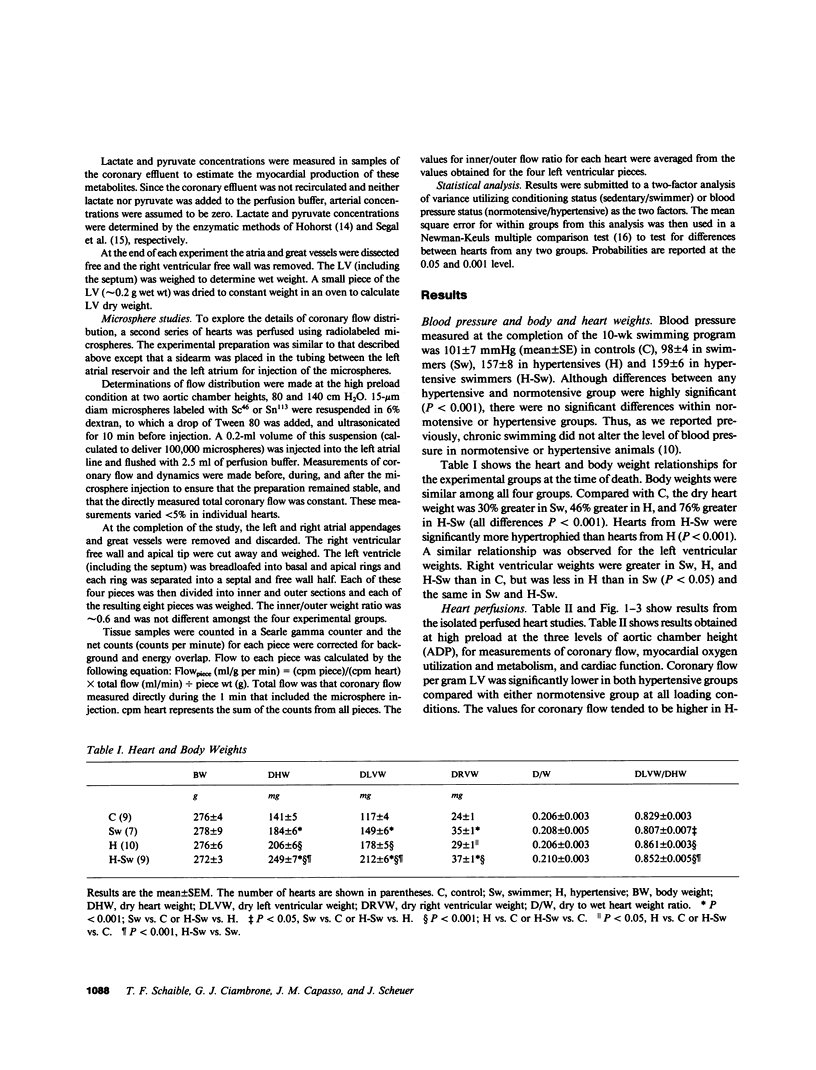
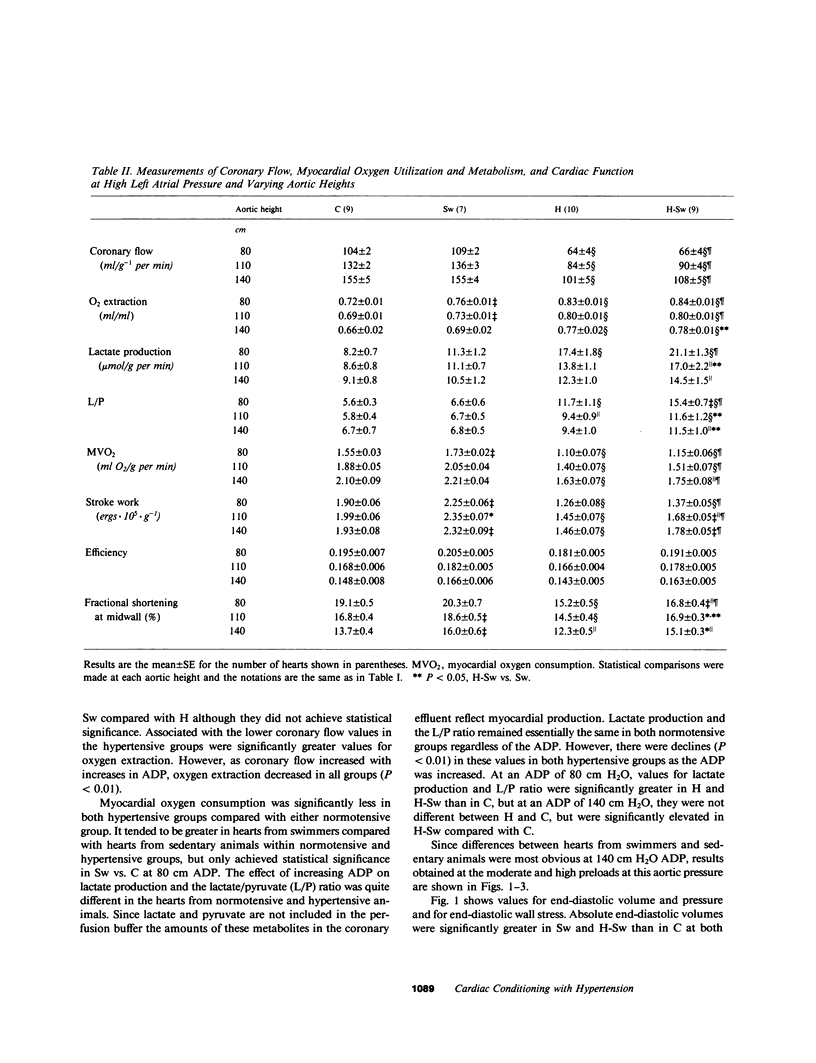
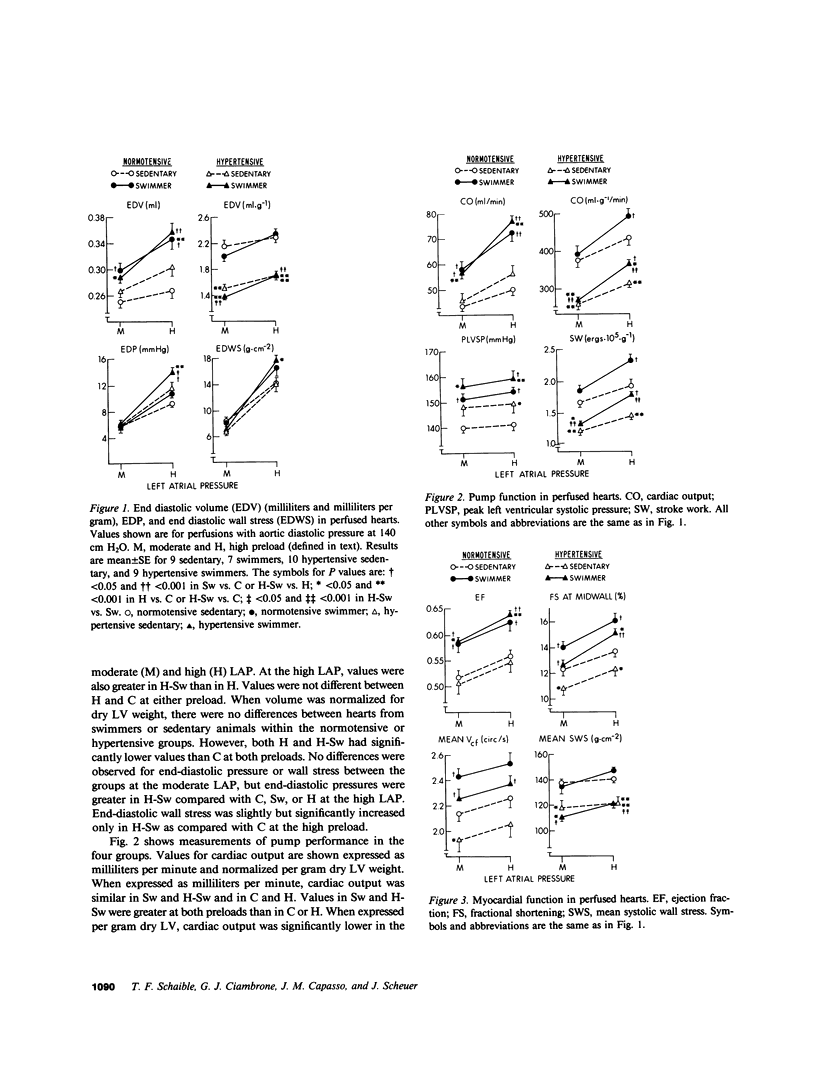
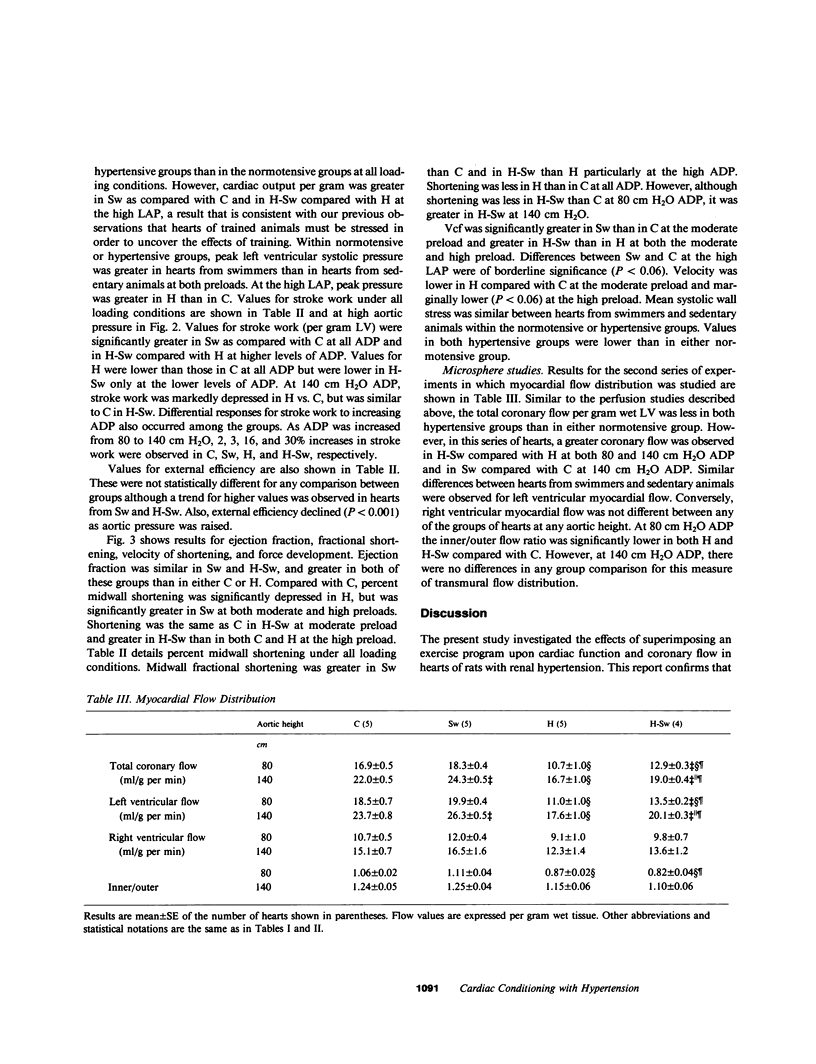
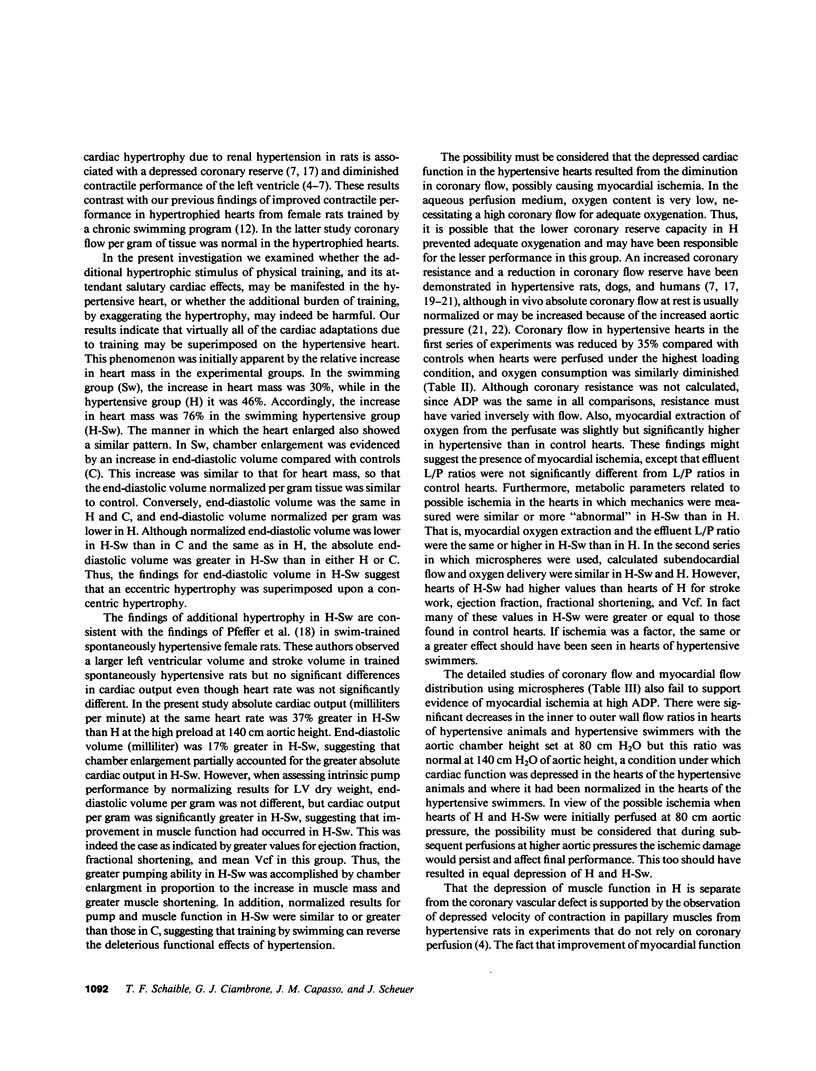
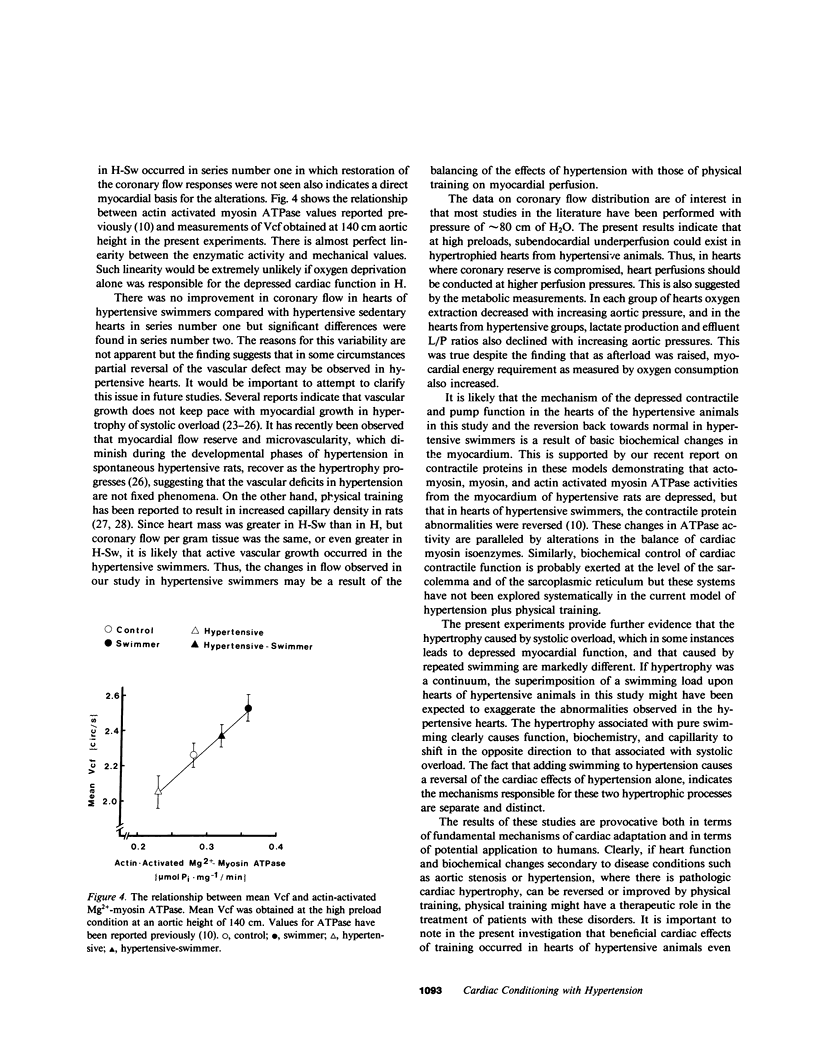
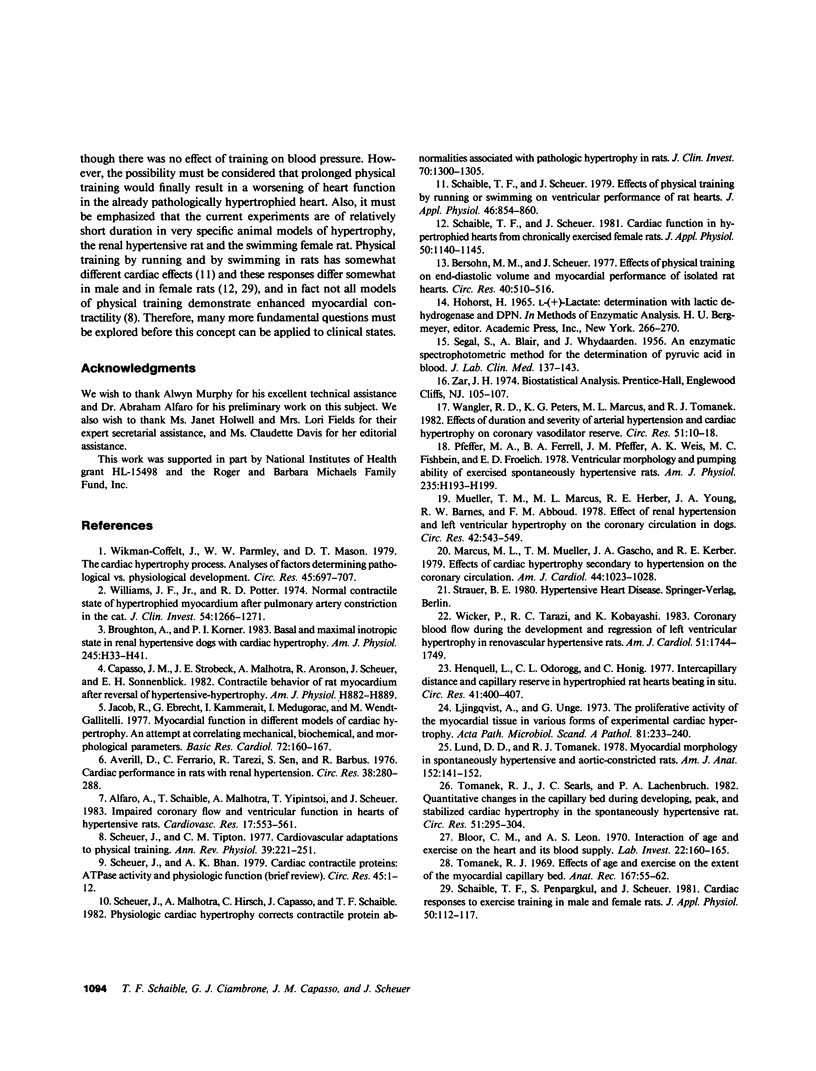
Selected References
These references are in PubMed. This may not be the complete list of references from this article.
- Alfaro A., Schaible T. F., Malhotra A., Yipintsoi T., Scheuer J. Impaired coronary flow and ventricular function in hearts of hypertensive rats. Cardiovasc Res. 1983 Sep;17(9):553–561. doi: 10.1093/cvr/17.9.553. [DOI] [PubMed] [Google Scholar]
- Averill D. B., Ferrario C. M., Tarazi R. C., Sen S., Bajbus R. Cardiac performance in rats with renal hypertension. Circ Res. 1976 Apr;38(4):280–288. doi: 10.1161/01.res.38.4.280. [DOI] [PubMed] [Google Scholar]
- Bersohn M. M., Scheuer J. Effects of physical training on end-diastolic volume and myocardial performance of isolated rat hearts. Circ Res. 1977 May;40(5):510–516. doi: 10.1161/01.res.40.5.510. [DOI] [PubMed] [Google Scholar]
- Bloor C. M., Leon A. S. Interaction of age and exercise on the heart and its blood supply. Lab Invest. 1970 Feb;22(2):160–165. [PubMed] [Google Scholar]
- Broughton A., Korner P. I. Basal and maximal inotropic state in renal hypertensive dogs with cardiac hypertrophy. Am J Physiol. 1983 Jul;245(1):H33–H41. doi: 10.1152/ajpheart.1983.245.1.H33. [DOI] [PubMed] [Google Scholar]
- Capasso J. M., Strobeck J. E., Malhotra A., Scheuer J., Sonnenblick E. H. Contractile behavior of rat myocardium after reversal of hypertensive hypertrophy. Am J Physiol. 1982 May;242(5):H882–H889. doi: 10.1152/ajpheart.1982.242.5.H882. [DOI] [PubMed] [Google Scholar]
- Henquell L., Odoroff C. L., Honig C. R. Intercapillary distance and capillary reserve in hypertrophied rat hearts beating in situ. Circ Res. 1977 Sep;41(3):400–408. doi: 10.1161/01.res.41.3.400. [DOI] [PubMed] [Google Scholar]
- Jacob R., Ebrecht G., Kämmereit A., Medugorac I., Wendt-Gallitelli M. F. Myocardial function in different models of cardiac hypertrophy. An attempt at correlating mechanical, biochemical, and morphological parameters. Basic Res Cardiol. 1977 Mar-Jun;72(2-3):160–167. doi: 10.1007/BF01906355. [DOI] [PubMed] [Google Scholar]
- Ljungqvist A., Unge G. The proliferative activity of the myocardial tissue in various forms of experimental cardiac hypertrophy. Acta Pathol Microbiol Scand A. 1973 May;81(3):233–240. doi: 10.1111/j.1699-0463.1973.tb03530.x. [DOI] [PubMed] [Google Scholar]
- Lund D. D., Tomanek R. J. Myocardial morphology in spontaneously hypertensive and aortic-constricted rats. Am J Anat. 1978 Jun;152(2):141–151. doi: 10.1002/aja.1001520202. [DOI] [PubMed] [Google Scholar]
- Marcus M. L., Mueller T. M., Gascho J. A., Kerber R. E. Effects of cardiac hypertrophy secondary to hypertension on the coronary circulation. Am J Cardiol. 1979 Oct 22;44(5):1023–1028. doi: 10.1016/0002-9149(79)90239-x. [DOI] [PubMed] [Google Scholar]
- Mueller T. M., Marcus M. L., Kerber R. E., Young J. A., Barnes R. W., Abboud F. M. Effect of renal hypertension and left ventricular hypertrophy on the coronary circulation in dogs. Circ Res. 1978 Apr;42(4):543–549. doi: 10.1161/01.res.42.4.543. [DOI] [PubMed] [Google Scholar]
- SEGAL S., BLAIR A. E., WYNGAARDEN J. B. An enzymatic spectrophotometric method for the determination of pyruvic acid in blood. J Lab Clin Med. 1956 Jul;48(1):137–143. [PubMed] [Google Scholar]
- Schaible T. F., Penpargkul S., Scheuer J. Cardiac responses to exercise training in male and female rats. J Appl Physiol Respir Environ Exerc Physiol. 1981 Jan;50(1):112–117. doi: 10.1152/jappl.1981.50.1.112. [DOI] [PubMed] [Google Scholar]
- Schaible T. F., Scheuer J. Cardiac function in hypertrophied hearts from chronically exercised female rats. J Appl Physiol Respir Environ Exerc Physiol. 1981 Jun;50(6):1140–1145. doi: 10.1152/jappl.1981.50.6.1140. [DOI] [PubMed] [Google Scholar]
- Schaible T. F., Scheuer J. Effects of physical training by running or swimming on ventricular performance of rat hearts. J Appl Physiol Respir Environ Exerc Physiol. 1979 Apr;46(4):854–860. doi: 10.1152/jappl.1979.46.4.854. [DOI] [PubMed] [Google Scholar]
- Scheuer J., Bhan A. K. Cardiac contractile proteins. Adenosine triphosphatase activity and physiological function. Circ Res. 1979 Jul;45(1):1–12. doi: 10.1161/01.res.45.1.1. [DOI] [PubMed] [Google Scholar]
- Scheuer J., Malhotra A., Hirsch C., Capasso J., Schaible T. F. Physiologic cardiac hypertrophy corrects contractile protein abnormalities associated with pathologic hypertrophy in rats. J Clin Invest. 1982 Dec;70(6):1300–1305. doi: 10.1172/JCI110729. [DOI] [PMC free article] [PubMed] [Google Scholar]
- Scheuer J., Tipton C. M. Cardiovascular adaptations to physical training. Annu Rev Physiol. 1977;39:221–251. doi: 10.1146/annurev.ph.39.030177.001253. [DOI] [PubMed] [Google Scholar]
- Tomanek R. J. Effects of age and exercise on the extent of the myocardial capillary bed. Anat Rec. 1970 May;167(1):55–62. doi: 10.1002/ar.1091670106. [DOI] [PubMed] [Google Scholar]
- Tomanek R. J., Searls J. C., Lachenbruch P. A. Quantitative changes in the capillary bed during developing, peak, and stabilized cardiac hypertrophy in the spontaneously hypertensive rat. Circ Res. 1982 Sep;51(3):295–304. doi: 10.1161/01.res.51.3.295. [DOI] [PubMed] [Google Scholar]
- Wangler R. D., Peters K. G., Marcus M. L., Tomanek R. J. Effects of duration and severity of arterial hypertension and cardiac hypertrophy on coronary vasodilator reserve. Circ Res. 1982 Jul;51(1):10–18. doi: 10.1161/01.res.51.1.10. [DOI] [PubMed] [Google Scholar]
- Wicker P., Tarazi R. C., Kobayashi K. Coronary blood flow during the development and regression of left ventricular hypertrophy in renovascular hypertensive rats. Am J Cardiol. 1983 Jun;51(10):1744–1749. doi: 10.1016/0002-9149(83)90222-9. [DOI] [PubMed] [Google Scholar]
- Wikman-Coffelt J., Parmley W. W., Mason D. T. The cardiac hypertrophy process. Analyses of factors determining pathological vs. physiological development. Circ Res. 1979 Dec;45(6):697–707. doi: 10.1161/01.res.45.6.697. [DOI] [PubMed] [Google Scholar]
- Williams J. F., Jr, Potter R. D. Normal contractile state of hypertrophied myocardium after pulmonary artery constriction in the cat. J Clin Invest. 1974 Dec;54(6):1266–1272. doi: 10.1172/JCI107871. [DOI] [PMC free article] [PubMed] [Google Scholar]


